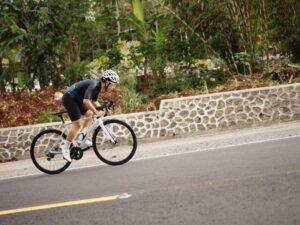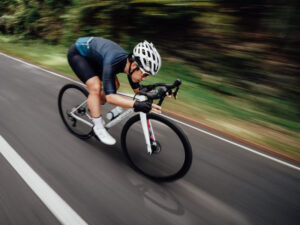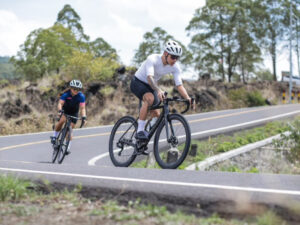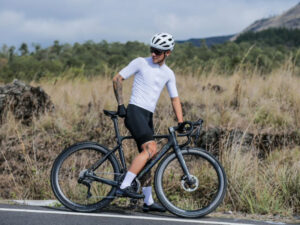In recent years, cycling has become increasingly popular among young people. The market is full of various types of bicycles—one that’s especially sought after by many riders today is the road bike. There are many things you should know so that your cycling is optimal. You need to learn how to optimize your bicycles by shifting gears correctly.
Efficient cycling requires the right gear in a variety of conditions. This will make cycling faster, more comfortable and prolong the life of bike components. For new cyclists, shifting gears on the bike can seem confusing. It’s important to know when to shift and how often is best. If you don’t know what gear to use on climbs or descents, your cycling probably isn’t as enjoyable—or efficient—as it could be.
About Shifting and Gears
To begin with, let’s talk about what shifters and gears are on a road bike.
The shifter is the most important part of a bicycle, serving to move gears or speed. The derailleur acts as a transmission system and maintains chain tension; it replaces mechanical gears by using cables connected directly from the handlebars to the rear wheel.
The gear itself is a bicycle component that conveys motion to the pedals when pedaled. It engages with the wheels, pushing them to spin. When you shift gears on your bike, it’s because of how shifter cables connect up with derailleurs—which control engagement in response to rider input at the lever.
There are usually three gears on the front of a bike: gear 1 (the smallest), gear 2 (medium), and Gear 3 (the largest). Gear 1 is used when going uphill or carrying heavy loads—this makes pedaling easier. In addition, the middle gear (2)—which is usually used for casual cycling—is often pressure-free. Cyclists don’t need a lot of power to pedal with this gear.
Finally, the largest gears (3) are normally found on flatter terrain and allow cyclists to ride at faster speeds than in smaller gears.
To shift gears on the front, complete the following steps:
- Shift to gear 1;
- Pedal quickly but not forcefully as you move into gear 2;
- Continue pedaling at a quick pace once in gear 3;
- Lower from 3rd down to first without reducing effort by rotating it over small position.
Then, how to combine gears and shifting when riding a road bike in several different conditions? Check out the tips below, okay!
Tips For Shifting Your Gear
Next, we will discuss some tips on how to shift more efficiently and smoothly in different situations.
1. Climbing

When you are riding uphill, make sure you set the shifter in its lightest position and gear ratio. Set your rear gear to be at its largest setting while placing your front ride on the smallest gearing. That way your pedaling will feel lighter but keep a good rhythm going.
Do not wait until you can feel the incline before shifting gears; shift in anticipation of it. When you do, keep pedaling but ease up on your efforts—especially if going uphill: pushing hard or stopping completely could cause the chain to skip off or even fall off entirely.
2. Speeding

You may want to increase the speed when cycling. For that, you can change your gear to a higher gear or harder gear. It’s easier to ride at high speed in high gear. High gears can also help you climb hills or accelerate from a stop sign. However, shifting up gear too far is dangerous because it combines the larger front chainring with the smaller rear cog—a combination that makes pedaling hard and leaves the rider less able to control speed than with a different gear option.
3. Long Flat Track

Riding a bicycle on a flat track is easy to explain: Pedal comfortably and you’ll go further. If you feel that the bike is not moving at all, or if you feel like you are spinning your wheels but are getting nowhere, shift to a harder gear. This will give your feet more resistance and will allow them to spin faster-and go! If you are tired, or if you want to go faster, shift into a higher gear or you can try different rear gears and ratios until something works well for your bike.
For flat roads, middle gear is ideal. You can shift into mid gear if you need power—but not enough for bumpy terrain. Combine this with the triple rear gear for smooth movement on a regular commute. And for beginners, it’s best to keep the bike in middle gear. Shifting is less important than controlling your speed and balance for new cyclist.
4. Cornering

You can downshift when cornering. Usually, when you are going to corner, you will slow down because you never know what’s ahead. You can shift down a few gears in this situation. Use the right-hand lever, but you don’t need to do downshifting as extreme as when you are about to stop or go uphill.
5. Starting (After the Red Light)

When you are in a stopped position and are about to start pedaling your bike. It would be better if your gear is already at low gear when you are about to start pedaling after a red light or from a stationary position. After that, you can slowly change your gear to middle gear or higher gear. Tips for you: downshifting when you are about to stop. Keep in mind not to do shifting when not pedaling or stationary. This makes it possible for your chain to come off the cassette when you pedal.
Conclusion
After reading this article, you are ready to start changing your gears without any doubts, even if you are a beginner! To make it easier, you can see the table below and understand better when you have to upshift or downshift.
| Gear Shift | |
|---|---|
| Uphill | Down |
| Downhill/Speeding | Up |
| Flat Track | Mid |
| Cornering | Down |
| Starting/Coming to a stop | Up/Down |
If you live in Singapore and have been looking for “bike shop or bike shop near me” lately, or looking for a road bikes in Singapore, you can visit the Rodalink Singapore website. Rodalink provides quality road bikes and other types of bicycle from brands that are already trusted. Don’t worry, you can find various promos at Rodalink, starting from OCBC Installment 0%, Free Delivery, and Shopback it, Pay Later program, to different ongoing promos that you can check directly on the Rodalink website. Not only that, you can also get various benefits by joining Rodalink Singapore members. It’s time to start your exciting cycling journey with Rodalink Singapore!



